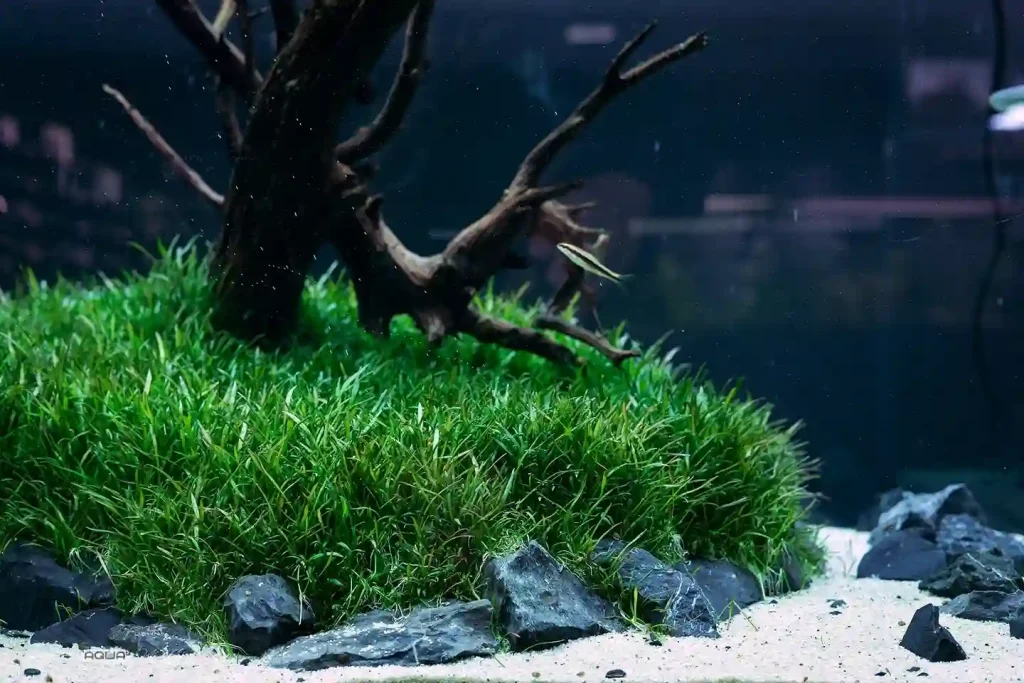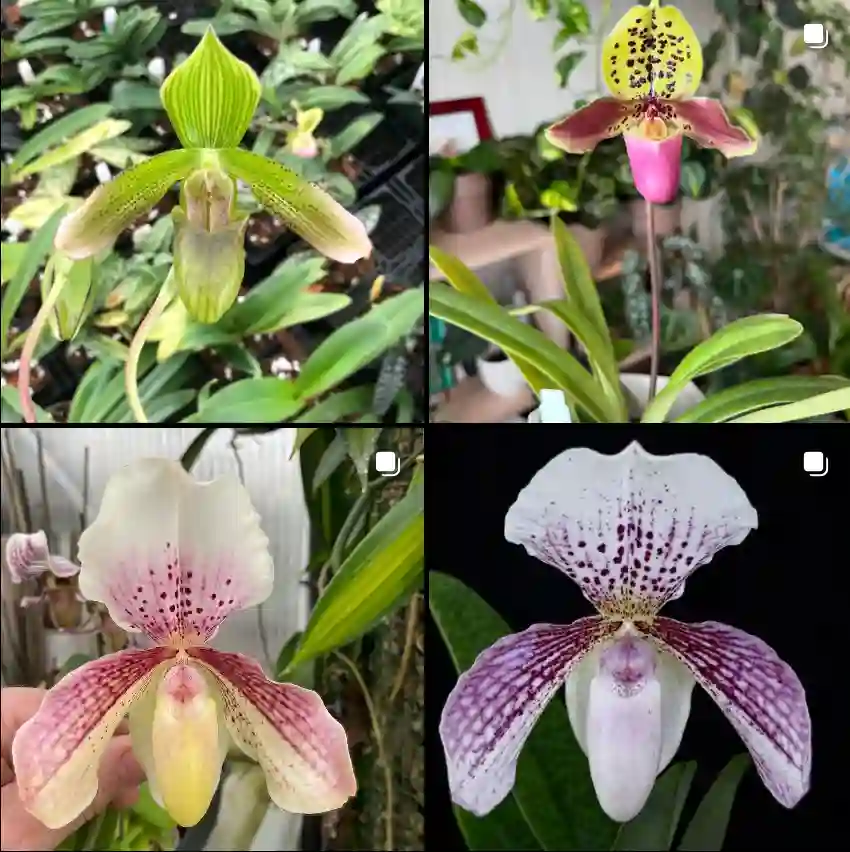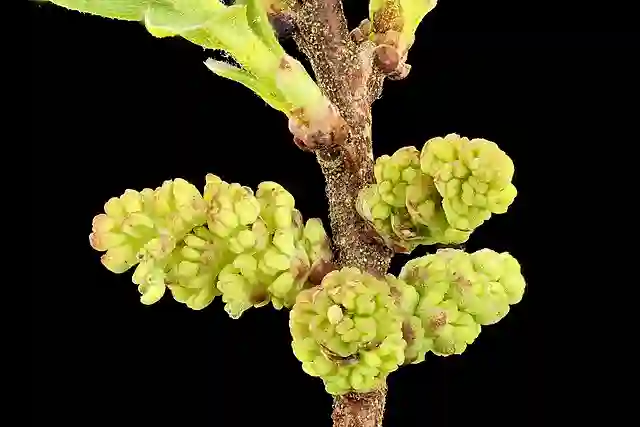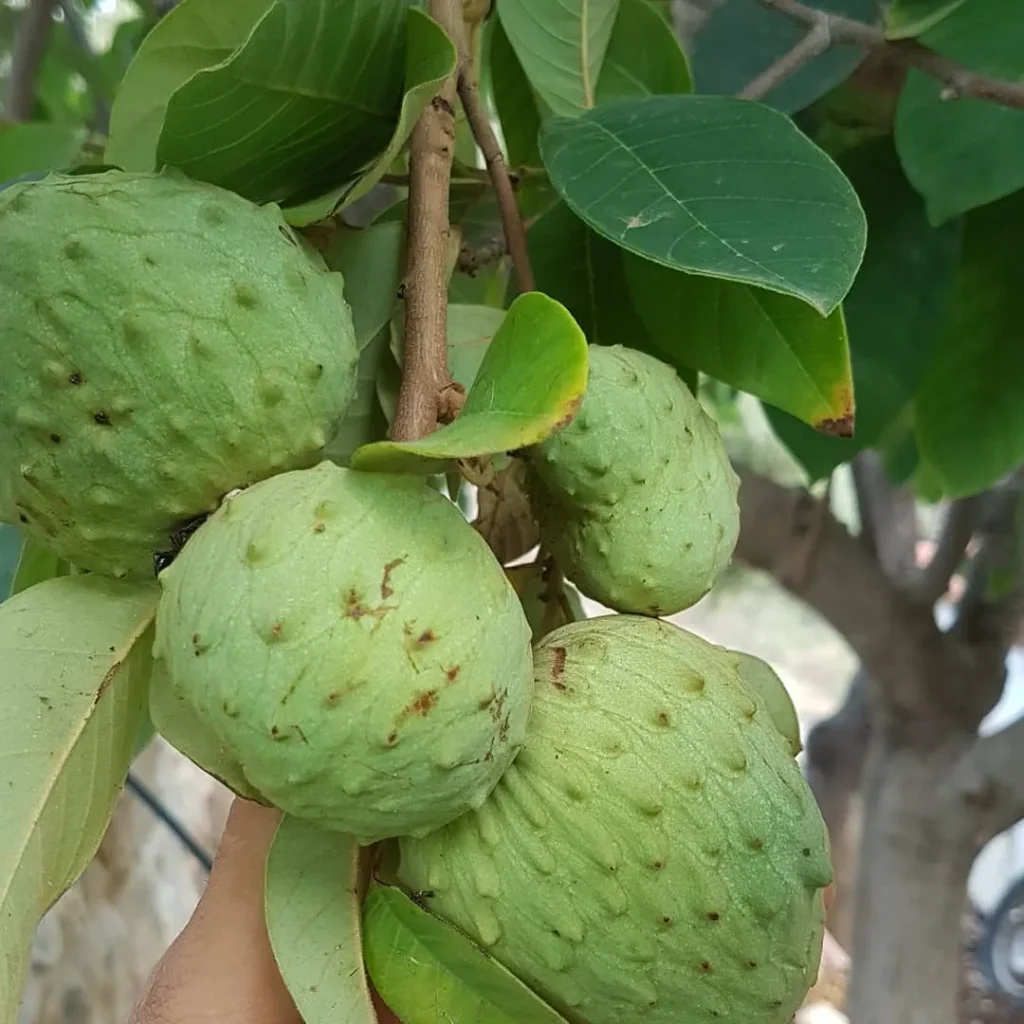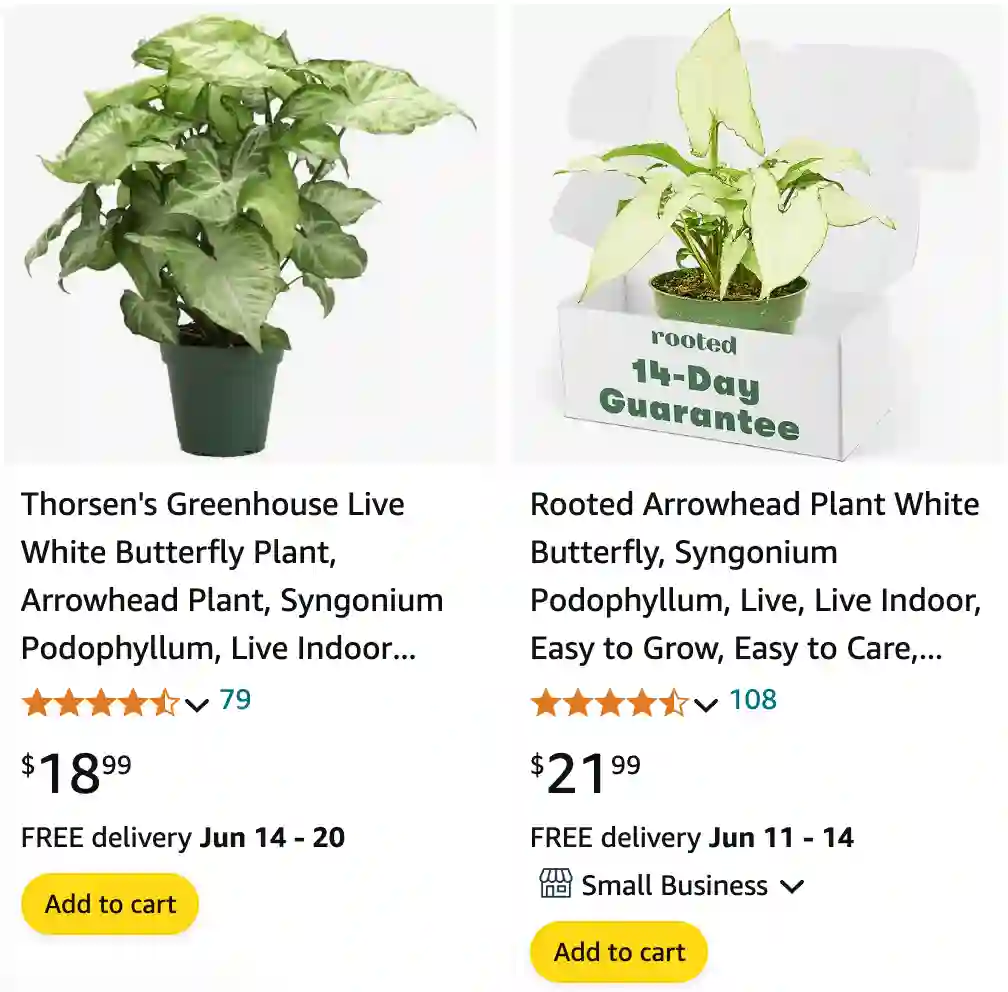
The initial encounter with the Syngonium podophyllum ‘White Butterfly’ often begins with immediate visual captivation. Its distinctive arrowhead-shaped leaves, adorned with creamy white and green variegation, evoke the delicate flutter of butterfly wings, promising an aesthetically pleasing addition to any indoor space. This plant, often referred to simply as the White Butterfly Plant or Arrowhead Vine, holds an inherent allure not merely for its static beauty but for its dynamic, evolving aesthetic. Its foliage undergoes noticeable changes in shape and variegation as it matures, offering a continuous journey of discovery for the plant enthusiast. This report chronicles such a journey, observing the plant’s transformation from a small seedling to a mature, vining specimen through a dedicated gardener’s perspective, presented in a time-lapse format.
Beyond its striking appearance, the ‘White Butterfly’ Syngonium is celebrated for its reputation as a low-maintenance, air-purifying houseplant. This combination of aesthetic appeal, ease of care, and functional benefits positions it as an excellent choice for both novice and experienced plant cultivators. The plant’s adaptability, while often misconstrued as requiring minimal effort, truly shines when its specific needs are understood and consistently met, leading to vibrant variegation and robust growth.
Part 1: The Genesis – A Tiny Arrowhead’s Beginning (Month 0-3)
The cultivation journey of the ‘White Butterfly’ Syngonium typically commences with a small, unassuming specimen, often housed in a 2-inch or 3-inch nursery pot. At this nascent stage, the plant exhibits delicate, heart-shaped or ovate juvenile leaves, characterized by a silvery-white to cream core with dark green edging. The initial step for any plant enthusiast is to prepare a suitable home for this new botanical companion.
Selecting the right container is paramount, with a pot featuring adequate drainage holes being a non-negotiable requirement to prevent water accumulation and subsequent root issues. The choice of soil is equally critical. The ‘White Butterfly’ Syngonium thrives in a well-draining, organic-rich potting mix. Components such as peat, perlite, or orchid bark are often recommended to enhance aeration and ensure proper moisture retention without waterlogging.
Botanical Roots
The scientific name for this popular houseplant is Syngonium podophyllum ‘White Butterfly’. It is important to note that ‘White Butterfly’ is a specific cultivar, or cultivated variety, of the broader species
Syngonium podophyllum. This distinction highlights the selective breeding that has enhanced its desirable aesthetic qualities.
Commonly, this plant is known by various names, including White Butterfly Plant, Arrowhead Plant, Arrowhead Vine, Goosefoot Plant, and even Nephthytis. The historical confusion with
Nephthytis (now Chamaedorea elegans) stems from the similar arrow-shaped appearance of their juvenile leaves.
The ‘White Butterfly’ Syngonium originates from the tropical rainforests of Central and South America, with its native range spanning countries like Mexico, Costa Rica, and Brazil. In its natural habitat, it thrives beneath the dense canopy of taller trees, receiving filtered light rather than direct, harsh sunlight. This natural preference provides crucial clues for successful indoor cultivation.
Initial Care Essentials
For the initial months of a ‘White Butterfly’ Syngonium’s life, establishing consistent and appropriate care practices is fundamental to its long-term health and vibrant appearance.
Light: The plant requires bright, indirect light to flourish. Ideal placements include north- or east-facing windows, which provide gentle morning sun or consistent indirect light. For south- or west-facing windows, sheer curtains can effectively diffuse intense afternoon rays, preventing leaf scorch. While the plant can tolerate lower light conditions, prolonged exposure to insufficient light can result in leggy growth, where stems become elongated and weak as the plant stretches for light, and a noticeable fading or loss of its characteristic variegation. Conversely, direct, intense sunlight, especially during peak hours, can lead to leaf burn, manifesting as brown or yellow patches on the delicate foliage.
Water: Consistent moisture is preferred, but the soil should never be soggy, as this can quickly lead to root rot. The recommended practice is to water thoroughly when the top inch or two of the soil feels dry to the touch. Using room temperature water is advised to prevent shocking the plant.
Soil: As previously mentioned, a well-draining potting mix rich in organic matter is crucial. The ideal pH level for the soil ranges from 5.5 to 6.5, indicating a preference for slightly acidic to neutral conditions.
A common perception is that the ‘White Butterfly’ Syngonium is “low maintenance” or “easy care”. While the plant can indeed tolerate less-than-ideal conditions, its ability to merely “tolerate” does not equate to “thriving.” For optimal growth, vibrant variegation, and robust health, consistent and specific care is essential. The plant’s adaptability allows it to survive in suboptimal light by growing slower or losing variegation; these are survival mechanisms, not indicators of thriving. Therefore, understanding and providing its preferred conditions leads to a far more rewarding and visually appealing cultivation experience.
Part 2: Sprouting Wings – The Juvenile Stage (Month 3-12)
During its juvenile stage, from approximately 3 to 12 months, the ‘White Butterfly’ Syngonium undergoes a remarkable transformation. The observer noted the subtle yet significant changes in leaf morphology. The initial heart-shaped or ovate leaves, characteristic of its youth, gradually begin to develop the distinctive arrowhead shape, which gives the plant its common moniker and resembles delicate butterfly wings. Concurrently, the creamy white variegation becomes more pronounced and vibrant, enhancing the plant’s visual appeal. This period is also marked by a moderate to fast growth rate, with the plant steadily unfurling new foliage.
Optimal Growing Conditions
Maintaining optimal conditions is crucial for fostering healthy growth and vibrant variegation during this active phase.
Light: The necessity for bright, indirect light remains paramount. Insufficient light will continue to result in leggy growth and a dulling of the distinctive variegation, as the plant struggles to photosynthesize effectively. Conversely, direct sun exposure, particularly the intense afternoon rays, can scorch the delicate leaves, causing irreversible damage.
Watering Frequency: The “finger test” remains the most reliable method: water when the top inch or two of soil is dry to the touch. During the active growing season (spring and summer), watering may be required more frequently, typically every 7-10 days. As the plant enters its semi-dormant period in fall and winter, watering frequency should be reduced to every 2-3 weeks, allowing the soil to dry slightly deeper between applications.
Humidity: Reflecting its tropical origins, the ‘White Butterfly’ Syngonium thrives in high humidity levels, ideally between 40-70%. Methods to increase ambient moisture include regular misting, placing the pot on a pebble tray filled with water (ensuring the pot does not sit directly in water), or utilizing a room humidifier.
Temperature: The ideal temperature range for this plant is between 60-85°F (16-27°C). It is highly sensitive to cold drafts and temperatures below 55-60°F, which can cause stress, stunted growth, and leaf damage.
Nourishing Growth
Fertilization: During the active growing season of spring and summer, the ‘White Butterfly’ Syngonium benefits from regular feeding. A balanced liquid fertilizer, such as one with a 3-1-2 NPK ratio, should be applied at half-strength, typically monthly or every 4-6 weeks. During the dormant period in fall and winter, fertilization should be reduced or halted entirely to allow the plant to rest. Always water the plant thoroughly before applying fertilizer to prevent root burn and ensure effective nutrient absorption.
Syngonium White Butterfly Quick Care Guide
| Feature | Detail | Reference Snippets |
| Botanical Name | Syngonium podophyllum ‘White Butterfly’ | |
| Common Names | White Butterfly Plant, Arrowhead Plant, Arrowhead Vine, Goosefoot Plant, Nephthytis | |
| Native Area | Tropical rainforests of Central and South America (Mexico, Costa Rica, Brazil) | |
| Plant Type | Perennial, Evergreen, Herbaceous Climber/Vine | |
| Growth Habit | Trailing, Hanging, Vining, Climbing (can be kept bushy with pruning) | |
| Growth Rate | Moderate to Fast | |
| Mature Size | 6 ft. long (vining/climbing), 1-2 ft. tall/spread (bushy indoors) | |
| Sun Exposure | Bright, Indirect Light (tolerates medium/low, avoids direct) | |
| Watering Needs | Moderate; allow top 1-2 inches of soil to dry between waterings. Less in winter. | |
| Humidity | Moderate to High (40-70% preferred) | |
| Temperature | 60-85°F (16-27°C); avoid below 55°F | |
| Soil Type | Well-draining, rich in organic matter (peat, perlite, orchid bark mix) | |
| Soil pH | 5.5-6.5 (Acidic to Neutral) | |
| Fertilization | Monthly/Every 4-6 weeks during spring/summer (growing season) with half-strength balanced liquid fertilizer. Reduce/stop in fall/winter. | |
| Bloom Season/Color | Rarely flowers indoors; small, greenish-white spathe in spring/summer | |
| Toxicity | Mildly toxic to humans and pets (contains calcium oxalate crystals) | |
| Special Features | Air purifier (removes formaldehyde, benzene, xylene), Easy to maintain, Drought-tolerant, Heat-tolerant, Pest resistance |
Part 3: The Ascent – Vining & Maturing (Year 1-3)
As the ‘White Butterfly’ Syngonium progresses from its juvenile phase into its second and third years, a significant shift in its growth habit becomes apparent. The gardener observed the plant’s transition from a compact, bushy form to developing distinct vining or trailing characteristics. This natural inclination to climb or spread is a hallmark of mature Syngoniums. The plant’s caretaker made a deliberate choice: to provide vertical support, such as a moss pole or trellis, encouraging it to ascend, or to allow its graceful stems to cascade from a hanging basket. As it climbs, the plant develops small, fleshy aerial roots from its visible nodes, which serve as anchors to its support structure.
This plasticity in growth habit and leaf morphology is not merely a natural progression but a significant cultivation choice that directly impacts the plant’s appearance and space requirements. By actively training the plant, the gardener can shape its development, influencing whether it remains a compact desk plant or transforms into a majestic vining display. Furthermore, pruning to maintain a bushy form also helps to retain the desirable juvenile arrowhead leaf shape, demonstrating a direct causal link between pruning strategy and the plant’s aesthetic. This active direction of the plant’s developmental trajectory fosters a more interactive and deliberate relationship between the plant and its caretaker.
Pruning for Perfection
Pruning serves multiple purposes for the ‘White Butterfly’ Syngonium: it encourages bushier, fuller growth, maintains the desired shape, and can even help retain the youthful arrowhead leaf form. To prune effectively, cuts should be made just below a leaf node, which are the points where leaves emerge from the stem and where new growth is stimulated. It is crucial to use clean, sharp pruning shears or scissors to make precise cuts and prevent damage or disease transmission. The optimal time for pruning is during the plant’s active growing season, from spring through late summer. A word of caution: the sap of Syngoniums contains calcium oxalate crystals and can irritate the skin, so wearing gloves during pruning is advisable.
Repotting Milestones
Repotting is a vital maintenance task for the ‘White Butterfly’ Syngonium, typically needed every 1-2 years, or when clear signs of root crowding, such as roots emerging from drainage holes, become apparent. The best time for repotting is in spring, coinciding with the beginning of the plant’s active growing season, which allows it to recover and establish quickly. When selecting a new pot, it should be only one size larger than the current one, typically about 2 inches wider in diameter, to prevent the soil from remaining overly wet, which can lead to root rot. The repotting process involves carefully removing the plant from its old container, gently loosening any compacted roots, and replanting it with fresh, well-draining potting mix.
Expanding the Family: Propagating Syngonium White Butterfly
One of the most rewarding aspects of cultivating the ‘White Butterfly’ Syngonium is its remarkable ease of propagation, often described as “super easy”. This allows gardeners to expand their collection or share their green companions with others.
Methods of Propagation:
- Stem Cuttings (Water or Soil): This is the most common and highly effective method.
- How-to: Select a healthy stem and make a clean cut just below a visible node, ensuring the cutting is 4-6 inches long and has a few leaves attached. Any lower leaves on the cutting should be removed to prevent them from rotting if placed in water.
- Rooting Hormone: While not strictly necessary, dipping the cut end in a rooting hormone solution can stimulate faster and more robust root development.
- Medium: Cuttings can be placed in a glass jar filled with chemical-free, room temperature water, which should be changed weekly to maintain freshness. Alternatively, they can be planted directly into a well-draining potting soil mix.
- Conditions: Regardless of the medium, cuttings should be kept in a warm, humid location with bright, indirect light to encourage rooting.
- Timeline: Roots typically begin to emerge within 2-6 weeks. The emergence of new top growth is a clear indicator of successful rooting.
- Plant Division: This method is particularly suitable for large, mature ‘White Butterfly’ plants, often performed during the repotting process. The plant can be carefully removed from its pot, and its root ball gently separated into smaller sections, each with its own root system, which can then be repotted individually.
Part 4: Beyond Beauty – The Syngonium’s Hidden Gifts (Year 3+)
As the ‘White Butterfly’ Syngonium matures and becomes a lush, established presence in the home, its value extends far beyond its striking visual appeal. This plant offers tangible environmental improvements and contributes significantly to the well-being of its inhabitants. This shifts the perception of the plant from merely decorative to a functional and beneficial component of a healthy living space.
A Breath of Fresh Air
The ‘White Butterfly’ Syngonium is a recognized air purifier, capable of filtering indoor air and removing common toxins. Scientific understanding points to its large leaf surface area as the mechanism by which it effectively absorbs airborne pollutants such as formaldehyde, benzene, and xylene, transforming them into harmless byproducts. These volatile organic compounds (VOCs) are frequently found in modern homes, originating from sources like paints, cleaning supplies, and furniture, and can contribute to various health issues, including headaches and respiratory problems. By actively removing these harmful chemicals, the ‘White Butterfly’ Syngonium contributes to a healthier and cleaner indoor environment, making it an excellent choice for homes or offices where improved air quality is a desired benefit.
Wellness & Harmony
The presence of indoor plants like the ‘White Butterfly’ Syngonium has been increasingly linked to psychological well-being. Research indicates that interacting with and caring for plants can reduce stress, elevate mood, lessen fatigue, and even increase productivity. This phenomenon is explored in horticultural therapy, where tending to plants serves as a form of treatment to improve mood and alleviate symptoms of anxiety and depression, providing a sense of accomplishment and purpose.
Furthermore, Syngoniums contribute to regulating indoor humidity levels. As tropical plants, they release moisture into the air through transpiration, increasing ambient humidity. This added humidity can be particularly beneficial during dry winter months when indoor heating systems can lead to dry skin, irritated eyes, and respiratory discomfort. By improving oxygen levels and creating a more breathable environment, the ‘White Butterfly’ Syngonium supports respiratory health, reducing the risk of issues like asthma and allergies.
Beyond these tangible benefits, the ‘White Butterfly’ Syngonium holds cultural significance, particularly in Feng Shui. Its distinctive five-lolobed leaves are believed to symbolize the five elements—wood, fire, earth, metal, and water—representing a balance of positive energy. It is also associated with springtime, dawning, youth, and new ideas. This cultural recognition aligns with the modern understanding of its positive contributions to well-being, suggesting that the plant is not just a decorative item but an active participant in creating a harmonious and beneficial indoor ecosystem.
Part 5: Navigating Challenges – Keeping Your Butterfly Healthy
Even with optimal care, plant cultivation can present challenges. While ‘White Butterfly’ Syngoniums are generally considered “relatively resistant to pests” , indoor conditions can sometimes lead to infestations or diseases. Many common issues, such as wilting, yellowing, leaf spots, and root rot, are often symptoms of improper environmental conditions, particularly overwatering, low humidity, or inadequate light. This highlights a crucial principle: optimal care is the primary defense. For instance, maintaining high humidity helps prevent spider mites , and proper watering practices are key to avoiding root rot. Addressing the underlying care issue is often more effective than merely treating the symptoms, empowering the gardener to proactively prevent problems.
Common Pests & Solutions
Spider Mites: These tiny pests are identified by yellowing leaves and fine webbing, resulting from their sap-sucking activity. Treatment involves increasing humidity, regular misting, and applying insecticidal soap or neem oil. For severe infestations, submerging the plant in a neem oil and dish soap mixture for 30-60 minutes has been suggested.
Mealybugs: Appearing as white, cottony masses, mealybugs feed on plant sap, leading to stunted growth and leaf drop. Management includes removing affected plant parts and treating with horticultural oil, insecticidal soap, or neem oil. Manual removal using fingernails, a toothbrush, or a toothpick can also be effective.
Scale Insects: These small, hard-shelled pests attach to leaves and stems, causing yellowing and leaf drop. Treatment is similar to mealybugs, involving horticultural oil, insecticidal soap, or neem oil, along with manual removal.
Aphids: Pear-shaped, soft-bodied insects, aphids cause distorted new growth and may lead to honeydew and sooty mold. They can be controlled with insecticidal soap or neem oil.
General Pest Prevention: Proactive measures are key. Always inspect new plants thoroughly before bringing them home. Use clean pots and fresh potting soil to avoid introducing pests or their eggs. Isolating new plants for a few days to weeks allows for observation and prevents potential spread to existing plants. Additionally, avoiding leaf-to-leaf contact between plants can hinder pest migration.
Neem Oil Dilution: For effective pest control, a typical neem oil spray solution consists of 1-2 tablespoons of pure, cold-pressed neem oil combined with 1-2 teaspoons of mild dish detergent (as an emulsifier) per gallon of warm water. This mixture should be sprayed thoroughly on all plant surfaces, including the undersides of leaves, until dripping. For active infestations, apply weekly; for preventative measures, a bi-weekly application is recommended. Always test the solution on a single leaf first to ensure no adverse reaction.
Homemade Insecticidal Soap: A simple homemade insecticidal soap can be made by mixing 2.5 tablespoons of liquid dishwashing soap (such as Dawn or Lemon Joy) and 2.5 tablespoons of vegetable oil per gallon of warm water. Another recipe suggests 1/4 cup of peppermint and tea soap, 1 cup of isopropyl alcohol, and 1 tablespoon of hydrogen peroxide mixed with 2 quarts of room temperature water. These solutions should be applied thoroughly to all plant parts.
Battling Diseases
Root Rot: This common and often fatal disease manifests as yellowing leaves, wilting, and mushy roots, primarily caused by overwatering or poorly draining soil. The most effective treatments involve improving soil drainage, repotting the plant into fresh, well-draining soil, and carefully pruning away any affected, rotting roots. Strict adherence to proper watering practices is the best preventative measure.
Leaf Spot (Fungal/Bacterial): Symptoms include circular brown spots, yellow patches, or water-soaked lesions on the leaves, which can lead to defoliation. These issues are often exacerbated by high humidity, poor air circulation, overwatering, or the spread of pathogens through water splashing on foliage. Treatment involves removing affected leaves and improving air circulation and reducing humidity around the plant. For fungal leaf spots, fungicides can be applied. Copper-based fungicides are particularly effective against both fungal and bacterial leaf spots.
Bacterial Blight (e.g., Xanthomonas, Erwinia, Pseudomonas): This serious disease presents with brown, water-soaked spots, yellowing, and rapid leaf drop, potentially leading to the rapid decay of cuttings or systemic infection that can kill the plant. Prevention is the most effective control strategy, focusing on using pathogen-free cuttings, minimizing overhead watering to prevent bacterial spread, and maintaining good sanitation practices. Affected leaves should be promptly removed. While bactericides, such as copper-based compounds, can be used, their effectiveness against systemic infections is limited. Vinegar (1 gallon per 100 gallons of water) has shown occasional effectiveness in reducing disease spread.
Troubleshooting Common Issues
- Brown Leaves/Tips: This can indicate underwatering (dry soil) , low humidity , sunburn from excessive direct light , or simply natural aging of older leaves.
- Yellowing Leaves: Often a sign of overwatering and potential root rot , but can also be caused by underwatering or a lack of essential nutrients. Natural aging also leads to yellowing and drying.
- Wilting/Drooping: The plant may droop due to underwatering , root rot , or, in more severe cases, a pathogen attack.
- Leggy Growth: Elongated, sparse stems with wide spaces between leaves are typically a response to insufficient light, as the plant stretches to find more illumination.
- New Leaves Not Unfurling: This issue is commonly linked to low humidity, underwatering, nutrient deficiencies, inadequate light, or pest infestations. Addressing these environmental or biological factors is key to promoting healthy leaf development.
Common Syngonium Pests & Diseases: Identification & Treatment
| Pest/Disease | Symptoms | Causes | Organic Remedies | Chemical Treatments | Reference Snippets |
| Spider Mites | Tiny pests, yellowing leaves, fine webbing | Dry conditions, sap-sucking | Increase humidity, misting, insecticidal soap, neem oil, submerging plant | Miticide | |
| Mealybugs | White, cottony masses, stunted growth, leaf drop | Sap-sucking | Remove affected parts, horticultural oil, insecticidal soap, neem oil, manual removal | Horticultural oil, insecticidal soap | |
| Scale Insects | Small, hard-shelled pests on leaves/stems, yellowing, leaf drop | Sap-sucking | Horticultural oil, insecticidal soap, neem oil, manual removal | Horticultural oil, insecticidal soap | |
| Aphids | Pear-shaped, soft-bodied insects, honeydew, sooty mold, distorted new growth | Sap-sucking | Insecticidal soap, neem oil | Various registered materials (test for phytotoxicity) | |
| Root Rot | Yellowing leaves, wilting, mushy roots | Overwatering, poor drainage | Improve drainage, repot with fresh well-draining soil, prune affected roots | N/A | |
| Leaf Spot (Fungal) | Circular brown spots, yellow patches, defoliation | High humidity, poor air circulation, water splash | Remove affected leaves, improve air circulation/reduce humidity, baking soda + soap spray | Fungicides (e.g., copper-based, Postiva, Daconil, Mural) | |
| Bacterial Blight | Brown, water-soaked spots, yellowing, leaf drop, rapid decay | Overwatering, poor sanitation, pathogen-infected cuttings, water splash | Use pathogen-free cuttings, minimize overhead watering, proper sanitation, remove affected leaves, vinegar spray | Bactericides (e.g., copper-based) |
Part 6: The Syngonium Family – A World of Varieties
The Syngonium podophyllum ‘White Butterfly’ is a beloved member of a diverse and captivating plant family. Understanding its characteristics in comparison to other popular cultivars provides a broader appreciation for the genus and helps cultivators select varieties best suited to their preferences and care capabilities. The more pronounced or “unnatural” the variegation, particularly pure white or intense pinks, the more specific and demanding the plant’s light requirements become for maintaining that variegation. This is directly related to the reduced chlorophyll content in the variegated areas. Varieties with less green foliage are inherently less efficient at energy production, making them more vulnerable to light extremes (scorching from direct sun, reversion from low light) and environmental stress (browning). This means that while all Syngoniums are generally adaptable, cultivating highly variegated forms often introduces a higher level of horticultural challenge and requires a more delicate balance of care.
White Butterfly vs. Its Cousins
- Syngonium podophyllum ‘White Butterfly’: This cultivar, the focus of this report, is known for its creamy white leaves with distinctive green edges and its versatile arrowhead shape. It is highly adaptable and can be grown as a trailing, climbing, or bushy plant.
- Syngonium podophyllum ‘Pink Allusion’: This variety features light green leaves adorned with delicate pink veins, creating a soft and elegant appearance. It tends to have a more compact growth habit compared to other Syngonium varieties. To maintain its best coloration, ‘Pink Allusion’ requires moderate light, and overwatering should be avoided. Its variegation can fade to green if exposed to too much or too little light.
- Syngonium podophyllum ‘Neon Robusta’: This striking cultivar boasts bright pink leaves, often appearing as an almost entirely dusty rose hue with dark pink veins, giving it an almost artificial, vibrant look. To retain its vivid coloration, ‘Neon Robusta’ requires bright, indirect light. This variety can be more sensitive to light and water fluctuations, sometimes developing strange leaf shapes due to humidity or watering issues, and is particularly susceptible to root rot. While it starts compact, it will eventually vine, though mature plants are rarely seen indoors.
- Syngonium podophyllum ‘Maria Allusion’: Characterized by bronze-green leaves with subtle pink undertones and deep red veins, ‘Maria Allusion’ often exhibits a metallic or rose-toned glow. It thrives in bright, indirect light for optimal color contrast, though it can tolerate lower light levels where its colors may appear muted. Consistent moisture is preferred, but cultivators must avoid soggy conditions. This variety maintains a compact, dense, and bushy growth habit but can also be trained to trail or climb.
- Syngonium podophyllum ‘Albo-Variegatum’: This highly sought-after variety is distinguished by its dramatic deep green, light green, and white marbled variegation, with each leaf presenting a unique pattern. Its rarity and striking appearance contribute to its high demand. Maintaining its variegation requires bright, indirect light; too little light can cause the white areas to revert to green, while too much direct sun can scorch the delicate white parts of the leaves. ‘Albo-Variegatum’ is also more sensitive to environmental changes, which can lead to browning of its white sections. It can develop a leggy growth habit with fewer leaves if not provided with adequate light , but can be kept bushier through pruning.
Syngonium Varieties Comparison
| Variety Name | Primary Leaf Color/Variegation | Unique Features | Growth Habit (Bushy/Vining) | Light Requirements for Color Retention | Specific Care Nuances/Challenges | Reference Snippets |
| ‘White Butterfly’ | Creamy white with green edges | Arrowhead shape, versatile, low maintenance | Versatile (bushy, trailing, climbing) | Bright, indirect light | Generally easy; avoid direct sun & overwatering | |
| ‘Pink Allusion’ | Light green with pink veins | Soft, delicate appearance; more compact | Compact, can trail/climb | Moderate light for best coloration | Avoid overwatering; variegation can fade with too much/too little light | |
| ‘Neon Robusta’ | Bright pink, dusty rose with dark pink veins | Intense, almost “fake” color; adds splash of color | Starts compact, then vines; mature rarely seen indoors | Bright, indirect light for vivid color | Can be picky with light/water; prone to strange leaf shapes from humidity issues; susceptible to root rot | |
| ‘Maria Allusion’ | Bronze-green with pink/red veins | Metallic/rose-toned glow; compact size | Compact, dense, bushy; can trail/climb | Bright, indirect light for best contrast | Tolerates low light (colors may mute); prefers consistent moisture, avoids sogginess | |
| ‘Albo-Variegatum’ | Deep green, light green, and white marbled | Dramatic, unique patterns; highly sought-after/rare | Can grow leggy; can be kept bushy | Bright, indirect light (crucial for variegation) | More sensitive to light extremes (scorching/reversion); prone to browning of white parts from stress; can grow leggy |
Conclusion: My Ever-Evolving Green Companion
The journey with the Syngonium podophyllum ‘White Butterfly’ is one of continuous growth and transformation, a true time-lapse unfolding in the living space. From its humble beginnings as a small, heart-shaped seedling to its eventual development into a lush, vining specimen with distinct arrowhead leaves, the plant consistently offers evolving beauty and a rewarding cultivation experience. The plant’s ability to change its leaf shape and growth habit as it matures provides ongoing visual interest, making it a dynamic rather than static decorative element.
The enduring appeal of the ‘White Butterfly’ Syngonium stems from its striking variegation, its relative ease of care when its specific needs are understood, and its significant contributions to indoor environments. Beyond its aesthetic charm, its air-purifying capabilities, which effectively remove common indoor toxins, and its positive impact on mental well-being, including stress reduction and mood improvement, elevate its status from a mere houseplant to a functional component of a healthy home. The cultural symbolism in Feng Shui further underscores its recognized capacity to foster harmony and positive energy.
Cultivating the ‘White Butterfly’ Syngonium, or any of its diverse cousins, requires an understanding that “easy care” does not imply neglect. Instead, it signifies adaptability and resilience, allowing the plant to tolerate a range of conditions while truly thriving under consistent, optimal care. The comparison of varieties reveals that the intensity of variegation often correlates with more precise care demands, particularly concerning light, as the plant’s chlorophyll content directly impacts its photosynthetic efficiency. By providing bright, indirect light, consistent moisture, adequate humidity, and appropriate temperatures, cultivators can ensure their Syngoniums maintain their vibrant coloration and robust growth.
With a little knowledge and consistent attention to its specific requirements, the ‘White Butterfly’ Syngonium proves to be a versatile and forgiving companion. It encourages a proactive approach to plant care, where understanding the interconnectedness of environmental factors and plant health is key to preventing common issues. Embarking on a Syngonium journey promises not just a beautiful plant, but an ever-evolving green companion that enriches the home with both its presence and its hidden gifts.
If i die, water my plants!
